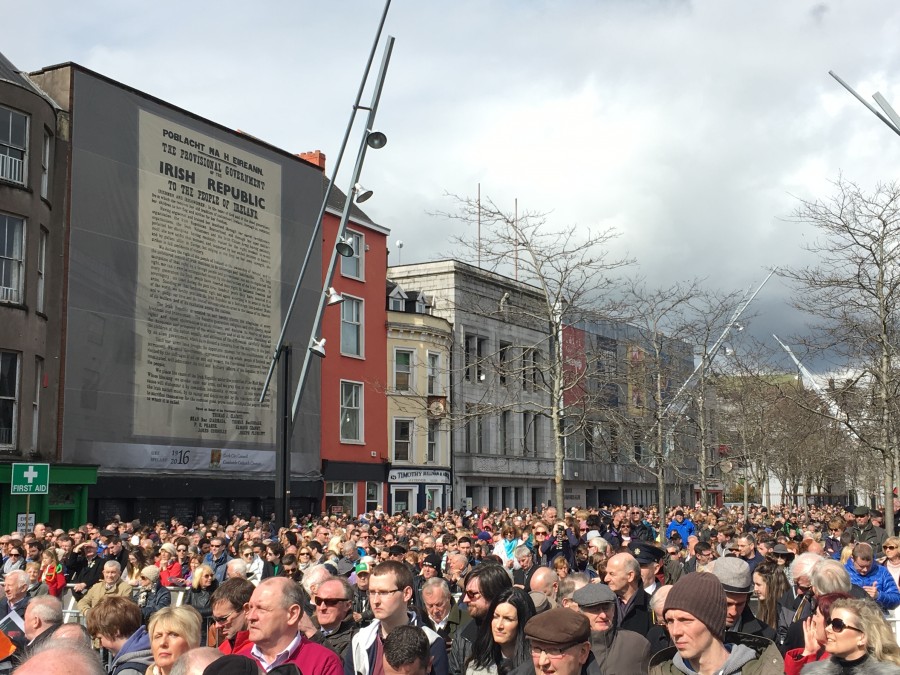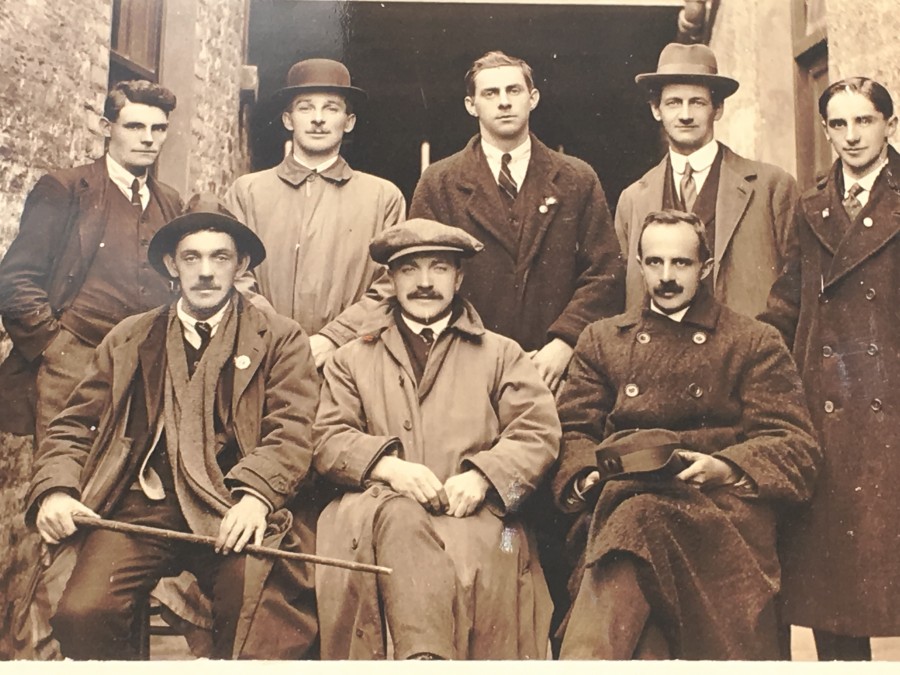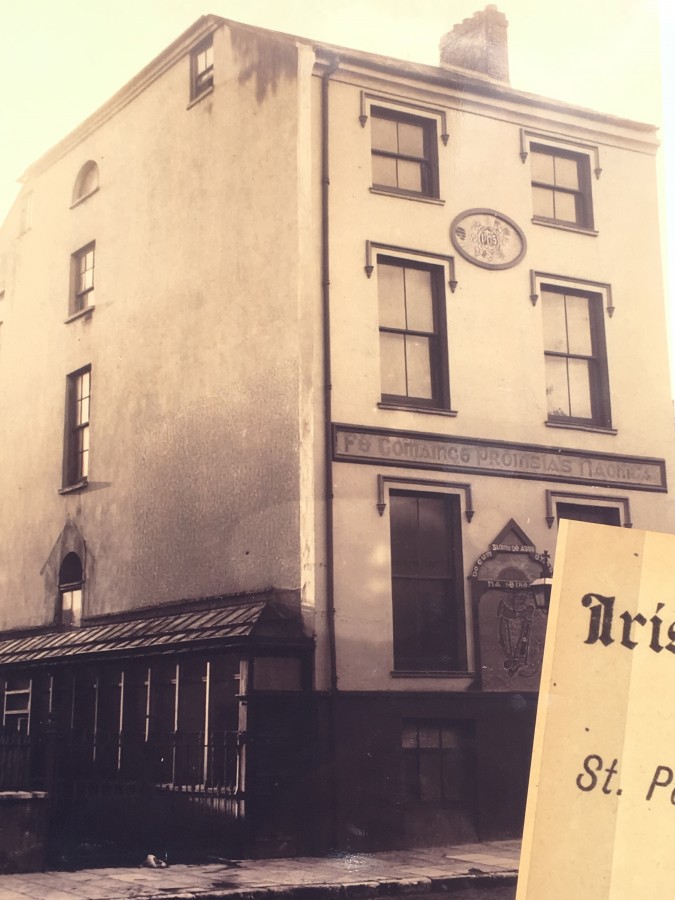Kieran’s Our City, Our Town Article,
Cork Independent, 28 April 2016
Remembering the 1916 Rising
This week marks the actual centenary of the 1916 Rising. It is most apt to note that across the country 100 years ago, thousands of Irish volunteers waited for the order to come to Dublin to take the Capital. By 1916 the national figure for volunteer membership had risen to 15,000. The 1,600- strong rebel force in Easter week contained 1,300 Volunteers and over 200 from the Irish Citizen Army; this amalgamated battalion was designated by the insurrectionary leaders as ‘the Army of the Irish Republic’.
Journalist Niall Murray in his research remarks that on St Patrick’s Day, 1916, thousands of men and boys in uniform — almost half of them carrying arms — took to the streets of cities and towns to demonstrate the growing membership. From almost 40 county inspectors (Cork, Galway, Tipperary and others were split into two Ridings), reports compiled in RIC headquarters put the numbers who turned out at just over 4,500 outside Dublin city. When 1,400 who paraded there — from among the capital’s estimated 2,225 Irish Volunteers — were added, it was seen that a total 5,955 members of the organisation had shown up at nearly 40 events in 19 counties.
Tomás MacCurtain was the Brigade Commander of the Irish Volunteers in Cork city and county in 1916 and he had organised volunteers to march to Kerry to collect guns from the German ship, the Aud which was to land the weapons at Fenit. Their head-quarters was at the Volunteer Hall on Sheares Street, upon which a new memorial was unveiled by Cork City Council in recent weeks.
Research by Dan Breen of Cork City Museum is now shown in newly erected historical panels on walls opposite the Volunteer Hall. In February 1915 the leadership of the Cork Brigade of Irish Volunteers signed a lease on a large building at Sheares Street for use as a headquarters. Unlike their old headquarters on Fisher Street, the building had a sufficient number of rooms to allow concurrent activities such as arms drill, map reading and first aid classes to take place on days when training was conducted on the premises.
On Easter Sunday morning, 23 April 1916, 163 Volunteers from the Cork City Battalion, together with others from Cobh and Dungourney, paraded under arms outside of the Volunteer Hall prepared to take part in the manoeuvres that were a cover for the Rising planned to establish an independent Irish Republic. After an address by Brigade Commandant, Tomás MacCurtain, they marched off to Capwell Railway Station to board a train for Crookstown. However, just as they were departing, an order arrived from Dublin cancelling the operation. This was the latest in a series of conflicting orders that had been received by MacCurtain during the past week.
That day just over members of the Cork Brigade mobilised and assembled at eight designated concentration camps throughout the county. But, when he received the latest order, MacCurtain felt he had no choice but to stand his men down and order them to return home. When Tomás MacCurtain returned to the Volunteer Hall on Easter Monday evening he learned that the rising had commenced in Dublin. As his men had dispersed and the element of surprise had been lost, he decided that it was too late to join the fighting and that his best course of action would be to defend the Volunteers against the British Army. Negotiations between both parties mediated by the Lord Mayor of Cork, Cllr Thomas C Butterfield and Bishop Cohalan eventually led to a peaceful settlement. The deal involved the Irish Volunteers agreeing to hand over their guns on the understanding they would be returned at a later date in return for being allowed to return home but MacCurtain was arrested and detained in Frongoch internment camp in Wales along with those who fought in Dublin. Shortly after his return to Cork he was elected Lord Mayor in January 1920 and at the same time continued to hold the rank of brigade commander of the IRA. On his 36th birthday, 20 March 1920 MacCurtain was shot dead by the Royal Irish Constabulary in front of his wife and son at their home in Blackpool, which was then ransacked.
All the above historical elements are explored at the Military Museum, Collins Barracks, Cork City. The exhibition is entitled “Order, Counter-order and Disorder” – Cork in Easter 1916 (opening Monday to Thursday from 10am to 1pm and opening on Friday from 10am to 1pm and 2pm to 3pm). An exhibition on the 1916 rising is opening this week in Cork City Museum – it explores its connection to Cork City – illustrating people, places and events connected to Easter Week in Cork. In addition, check out in the historic St. Peter’s Church this year which is home to the “Rebellion!” exhibition curated by Rachel Abraham, which explores the people and organisations that went beyond the ideals of an Irish Republic and laid the foundations for its reality. It places the Rising in context by outlining the issues of the time, e.g. home rule and the outbreak of World War One. The exhibition shows why the effects of the Rising have been so far-reaching that we still remember those individual men and women today.
Captions:
841a. Crowds beneath the printed Proclamation during the recent Easter Monday Commemorations 2016 (picture: Kieran McCarthy)
841b. Photograph of officers of the Cork Brigade outside the office of the Freeman’s Journal in Dublin; back row: Daithí Cotter, Seán Murphy, Donal Barrett, Terence MacSwiney, Pat Trahey; front row: Tadgh Barry, Tomás MacCurtain & Pat Higgins (source: Cork City Museum)
841c. Cork Volunteer Hall, Sheares Street (source: Cork City Museum)


